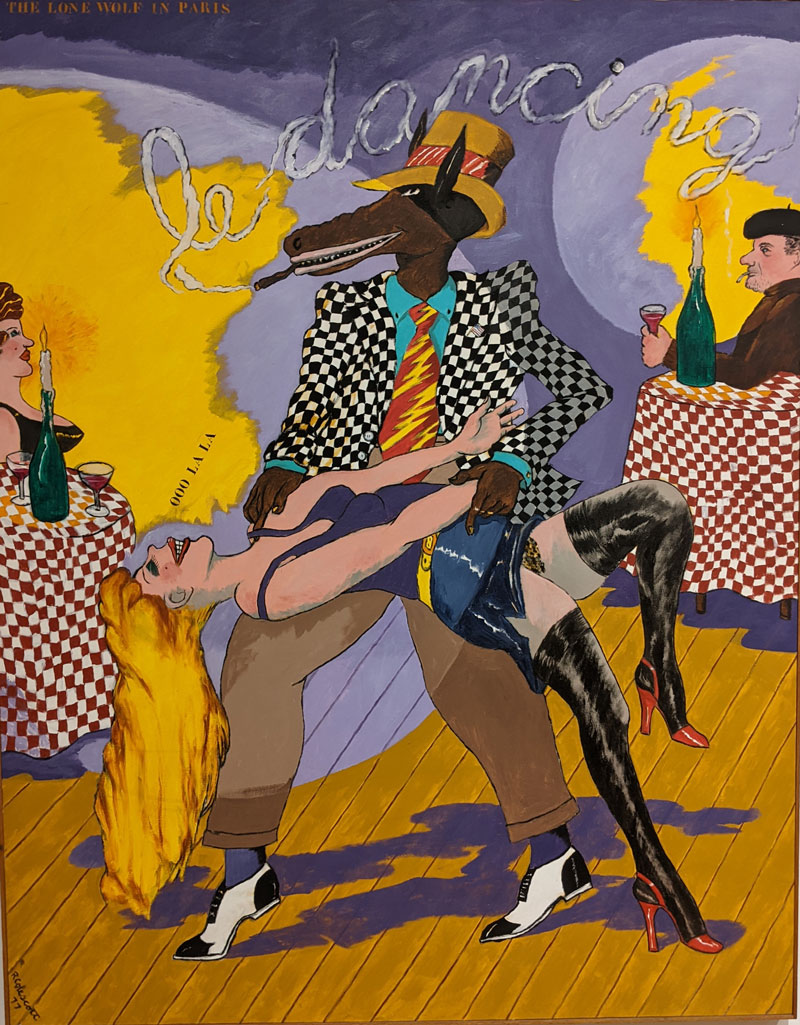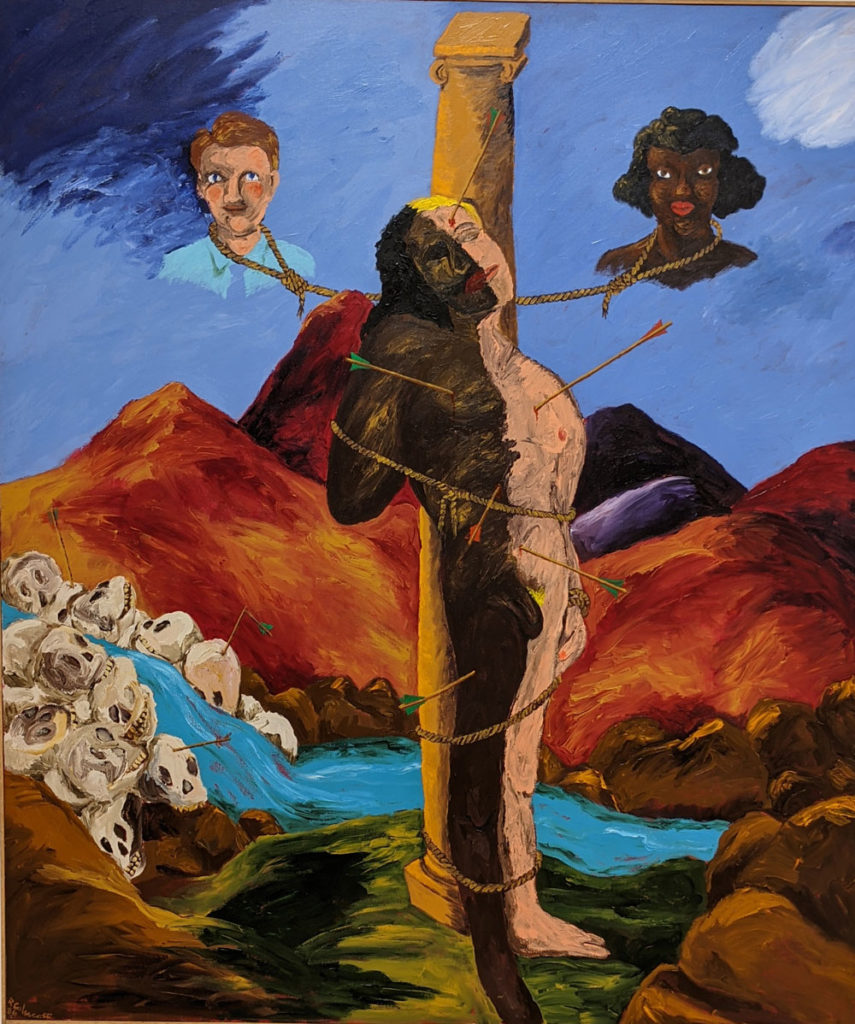
The world is full of superheroes. People who either save lives or make lives more bearable and better by following their calling. Artists stand in the front of that line. They save lives by showing the importance of all life and by re-balancing the scales to show how value is a subjective measure. They can do that boldly and defiantly like Badiucao, the Chinese artist who, after having been jailed for his paintings, left his home country to take up residency in Florida to continue speaking his truth on canvas.
Robert Colescott objectives skew in a different direction; but in many ways his goals are the same. Rather than calling attention to the hypocrisy and brutality of totalitarian rule; Coleswell aimed his darts at the absurdity of racism using the visually provocative to capture your attention and make you try to interpret his message. Imagination, personality and intent are just a few of the things that go into creating a piece of art. Because he often packed his art with so many cues, Colescott’s paintings make it a thrilling adventure to decipher where the line between any of those things exists. The hedonistic abandon seen in Lone Wolf in Paris might not require a heightened sense of perception to catch its intent, but other pieces like his Knowledge of the Past is the Key to the Future might find you unpeeling its layers for hours. In the busy fourth floor gallery of the Chicago Cultural Center where Art and Race Matters: The Career of Robert Colescott is currently on view, that is not a feasible luxury. The flow of visitors to the exhibition last week relied on steady movement to maintain its comfortable rhythm.
Born in 1925, Colescott may have picked up his willingness to challenge a restrictive society from his parents. Newly married and considering what part of the country would prove the best for raising their future children, they left Louisiana and went west to California. Colescott’s art often reflects that kind of resistance. Rather than accept norms that re enforce a confining system, his art chooses to taunt it or question it with images that either dispel or question commonly accepted notions of race. Getting there was a process of growth. First, he had to discover he was drawn to art, that he had talent and that he could refine and expand his craft through arts education. He studied at respected art schools and later taught art in Seattle public schools; all the while developing his own artistic voice.

Looking at his early works in the 50s and scanning across the decades to the time of his passing in 2009, the shifts he makes in how his art looks and what it says are sharp and radically distinct from one phase to the next. His very early work looked back at old masterpieces and redefined their meaning according to his own perspective. It was appropriation for a purpose. He’d re-imagine the balance and emphasis of piece as he did with Manet’s Olympia. There he seemed to be redistributing the power balance. In other examples, he’d change the emphasis of the painting in ways that tweaked the character of the original enough to qualify his work as a different entity. The notion seemed to amuse Colescott. He often said he’d like people to think of his work when they look at the original.
He went on to explore abstraction and impressionism, all admirably and beautifully completed. Travel, time and the influence of other artists and movements ended up on the tip of his paintbrush and led to the style of art for which he’s celebrated. It’s almost playfully colorful, bright bold with a aura of the comical. Always a big fan of the comics and artists like Chris Ware who helped pioneer underground comics of the 60s and 70s, the punch of alternative art billows from Colescott’s creations. Many of them brazenly toy with the sexual and travel the volatile line between race and sex. He’s also original in the way he explores stereotypes. In one painting, a young Aunt Jemima looks a little like Betty Bop and appears to be the love interest of a white prospector. In another, we’re left to wonder if the gun pointing at us from the canvas is a statement of aggression or one of necessary self-protection. Roaming across any individual canvas will uncover scores of places to rest your eye and lose your imagination in the world the artist has created.

Colescott would go on the travel to the Middle East and Africa and fold the perceptions he developed into his art. One of the last pieces he completed had the feel of an ascension. Free and open, one color dominates while others appear as if they’re important ancillary statements emphasizing a beautifully eloquent main point. It’s an arresting piece among a gallery full of captivating art. Since the Colescott exhibition will be in town until May, there will be other opportunities enjoy its riches.
Art and Race Matters: The Career of Robert Colescott
Through May 29th, 2022
Chicago Cultural Center, 4th Floor Exhibit Hall
78 E. Washington St.
Chicago, IL 60602
https://www.cityofchicago.org/city/en/depts/dca/supp_info/chicago_culturalcenter.html/